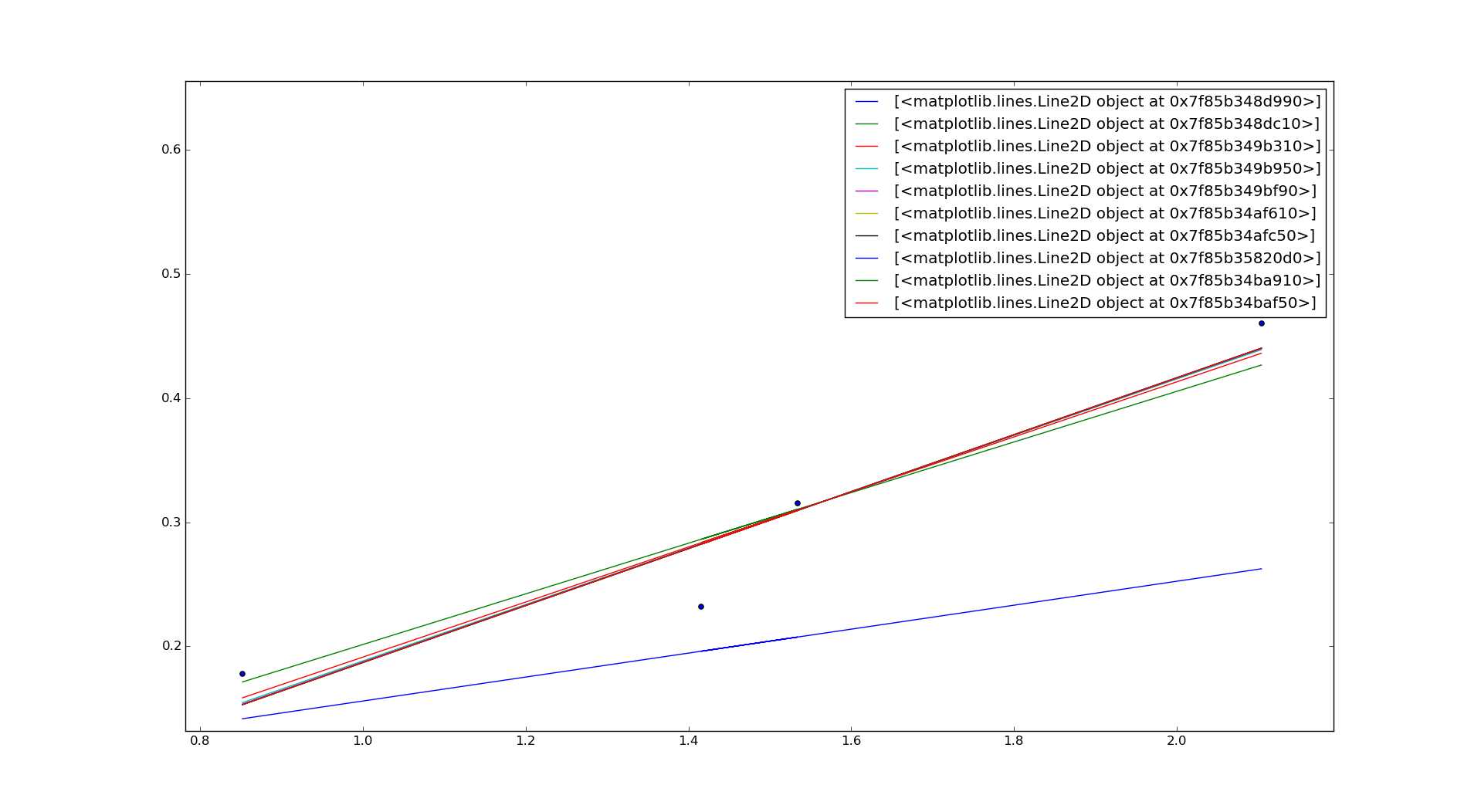标签:
1 import numpy as np 2 import matplotlib.pyplot as plt 3 #a = np.matrix([[1,1.15],[1,1.9],[1,3.06],[1,4.66],[1,6.84],[1,7.95]]) 4 #b = np.matrix([[1.37],[2.4],[3.02],[3.06],[4.22],[5.42]]) 5 a = np.matrix([[1,2.104], [1,1.416], [1,1.534], [1,0.852]]) 6 b = np.matrix([[0.460], [0.232], [0.315], [0.178]]) 7 xdata = a[:,1] 8 ydata = b 9 tempp =[] 10 def gradient(X_norm,y,theta,alpha,m,num_it): 11 temp=np.matrix([[float(0)],[float(0)]]) 12 for i in range(0,num_it): 13 h=np.dot(X_norm,theta) 14 temp[0]=theta[0]-alpha/m*(np.sum(h-y)) 15 temp[1]=theta[1]-alpha/m*((h-y).T*X_norm[:,1]) 16 theta=temp 17 if i%100 == 0: 18 ypredict = xdata * temp[1] + temp[0] 19 tempp.append(plt.plot(xdata,ypredict)) 20 return theta 21 c = gradient(a,b,np.matrix([[float(0)],[float(0)]]),float(0.2),float(4),1000) 22 #ypredict=xdata*c[0]+c[1] 23 print c 24 plt.scatter(xdata,ydata) 25 plt.legend(tempp) 26 plt.show()
程序之后,就是结果:

标签:
原文地址:http://www.cnblogs.com/cruiser123/p/5560950.html